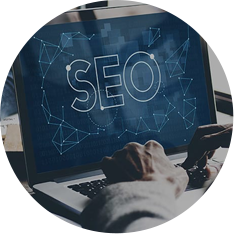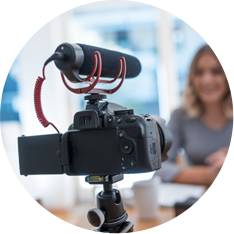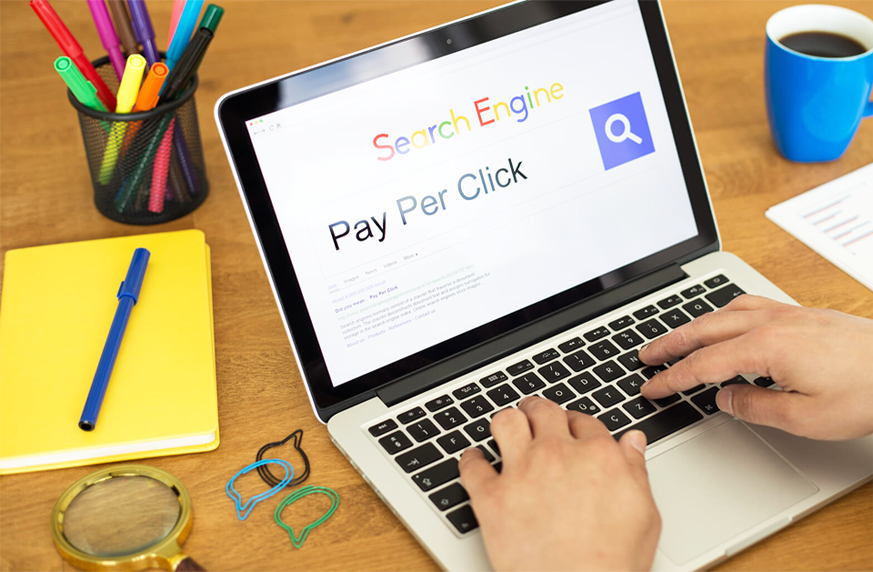Marketing Funnels for Financial Advisors

Marketing Advice for Every Category of Marketing Funnels
How effective are your online digital marketing methods? Are they outdated and slow-moving? Numerous Financial Advisors make the grave mistake of using the same marketing strategy for years at a time. But how much positive change is an old marketing strategy supposed to bring for a firm that is changing fast?
The truth of the matter is that consumer behavior is something that changes every day. This, therefore, begs for newer marketing methods to accommodate a dynamic set of customer needs. The flip side of not using updated strategies is deteriorating performance as customers will tend to choose your competition.
Here, you’ll get to learn what effective online digital lead funnel marketing strategies can do for you and how well it works to attract more customers.
The Present Vs The Past-Adjusting your Marketing Funnel
Marketing funnels provide steps for targeting consumers to follow. These steps are what lead these potential clients to buy your products/services. Funnels are no longer as straight forward as they were in the past.
Not long ago, it was easy for people to purchase products without the process seeming complicated. Today, however, people need more convincing. What with rife competition and a ton of options to choose from, it will take some quick thinking on your part to ensure that you can capture as large a fraction of the target audience as possible.
Generally, the lead generation funnel starts with awareness, then on to consideration. Thereafter, people have the habit of researching and discovering as they venture online to see what other options are available. Once they are ready to purchase, they consider the post-purchase experience and decide where to buy. This is the final step of the process known as the loyalty loop.
It all seems blurry, right? Let’s first have a closer look using detailed examples which focus on e-commerce purchases, need-based services, and want based services.
The Digital Marketing Process, Your Map to Success
Marketers are a bit confused as the trend moves towards a more modern loop purchase funnel. However, by carefully studying and understanding the process everything becomes quite clear. Refer to Avinash Kaushik’s See-Think-Do-Care Draft for a more vivid framework of how you can reach buyers.

See
This is where you identify and focus within your sight who the largest qualified audience for you.

Think
This is the process of idealizing how you can commercialize the qualified target audience you identified above.

Do
At this stage, it now ceases to be all about the thought process and action begins to take precedence. You now figure out and do what it takes to commercialize the target audience.

Care
Here, you focus on those active clients who’ve made two or more transactions from you. You offer them post-purchase advice and help with anything they need regarding your products.
With these four simple steps, you have an authentic foundation on which to build your buyer loop.
The See Stage
Here is where the purchase funnel process begins. Note that at this point, you have a target audience in mind. This audience comprises people that either don’t need your product or aren’t yet aware that your product can be useful for them. Your job is to inform them and make them aware of your product’s uses and benefits.
Marketing Funnels and Conversion
At this point, you want to trigger your target audience to start thinking and come a step closer to purchasing your product. Instead of using numerous unnecessary marketing strategies here, all you truly require is social media marketing and Pay-Per-Click display ads.
The Think Stage
By the time you get to the thinking stage of the funnel process, people online are already aware of the existence of your products and now are considering (thinking) about buying your products. The trick is to get people in your target audience to go through the loop up until you direct them to your website.
To convince them to buy, it is advisable to use more videos. Remember that 71% of consumers are more inclined to watch videos posted on social media. It’s also important to educate consumers about your products through informational product reviews.
To make your marketing campaign even more effective at this stage, it is evident that by combining the power of PPC search ads, SEO, video marketing, and email marketing, you will reap a far more bountiful harvest than you would if you used a different approach.
Here’s a closer look at how each one of these marketing campaigns work.

PPC Search Ads – A person may be searching for a product that relates to what your company offers online. PPC ads pop up in these search results trying to seize the opportunity by grabbing the searcher’s attention and leading them to your site. If used properly, PPC ads can be incredibly instrumental in popularizing your site/products, boosting traffic, and increasing sales.
The ‘think’ stage is a crucial part of the digital lead funnel. PPC ads prove far more effective because they promote product and brand awareness online by up to 80%.

SEO-Search Engine Optimization is a fine technique that you can use to rank higher on search engine results. SEO is crucial because it allows you to attract authentic attention from potential clients online. When your site receives more traffic, there’s a high chance that your leads also transform into increased revenue.
When done properly, SEO can promote your site as it is likely to appear on the first page of Google, Bing, or Yahoo. Seeing as fewer people ever go to the second or third page of search engine results, you may not receive as much attention as you want if your site doesn’t show up on the first page of Google.
The best way to boost your rank online is by posting as much useful information as possible on your site. This may be in the form of blogs or research papers that answer questions and tell people about your products. SEO comes in when you deliberately use specific/relevant keywords and phrases as part of the content inside your blogs or research papers.
Make sure that you make the blogs on your site sharable via email or social media and that it’s mobile device friendly.
Harness the power of online reviews as up to 80% of consumers trust these reviews almost as much as they do recommendations from family and friends. Reviews offer real testimonies and opinions of people who have used your products and services.
Within a short period, you’ll realize that your site not only receives more traffic but that it also gradually moves up through the ranks to show up on the first page of search engine results.

Video Marketing – When asked about the impact videos have on their decision making, a whopping 90% of consumers admit that they decide to buy a product based on the videos posted on a site. Produce high quality, informative, and numerous videos to offer potential customers the variety they are looking for and to convince them to buy.
Note that a good video is neither too long nor too short. Seeing as most people online have a short attention span, a video that’s approximately 30 seconds long is just the right length to convey your message. Make relevant videos that inform, explain how to use, and answer people’s questions about the product your company offers. Then share and upload these well-composed videos on YouTube and other social media avenues and also on your website.

Email Marketing – Through email marketing, you have a list of a current and potential client who you can communicate regularly. According to recent reports, business owners who use email marketing can expect as much as 38% or more for every 1$ they spend. Email marketing is an excellent marketing method as it enables you to acquire and retain customers for a long time.
By using coupons and product codes in your emails, you prompt people to move through the funnel even faster. Be sure to use opt-in email marketing as this means that you are advertising to people that are actually interested in your products.
The Do Stage
Here’s where customers move from being potential to become active customers. To get to this point, you must churn content that makes people act and buy. Use the right language and tone. Be careful enough not to seem like you are trying too hard. Instead, sound assertive and professional when it’s necessary or choose the other route of using a friendly tone when explaining your products to people.
Waste no time explaining to people how a product works and what features it possesses, this has already been covered in the previous stages above. At the ‘do’ stage it is time to be intentional about leading the person to buy. Do this by asking the customer to look at the prices of your products and choose what best fits their needs.
Location Keywords including the name of your state or your city.
Pricing terminology like ‘how much’, ‘cost’, and ‘comparison’.
Branded keywords
Keywords that elicit purchase. Examples include ‘packages’, ‘buy’, and ‘free trials’. C
ontact keywords like ‘request’, ‘contact’, or ‘call’.


Post and churn personalized content
Link and promote whitepapers, testimonials and case studies inside your content
Compose tailor-made presentations
Offer coupons and free trials
Post and promote numerous live demo videos
Host live question and answer questions on social media
The “Care” Stage
At this point, the clients you had your eyes on have successfully gone through the funnel and have now become your loyal customers. Nope, this is not your cue to count your profits, sit back, and relax. It is time to check back and find out how the client is doing and whether they need help with anything regarding the product they bought from you previously. Welcome to the ‘care’ stage, the final part of the funnel process.
Here’s where you cement your relationship and find a way to retain the customer. It costs much less to retain customers. Which explains why this stage is increasingly imperative. If you do your work right, your current customers will become repeat buyers as they go through the funnel over and over again.
The ‘care’ stage involves asking them for feedback, requesting reviews, and engaging with them on social media. It also involves giving them special offers, customer-only discounts, gifts, and deals on their upcoming birthdays or other special occasions.
Personalize your correspondence with your consumers. Refer them to their names as this makes them feel acknowledged and special.
Putting All your Information Together
During the research stage, you collected tons of information trying to figure out who your target audience is, what they are looking for, how to reach them, which platforms to use, and so on. All this information can be a tad bit hard to organize into something useful.
So with the information, you have, here’s how you can create and execute your ultimate Digital Lead Funnels Plan.
Begin by opening an excel file document.
Make a marketing asset list that comprises your whitepapers, landing pages, ad creatives, blog posts and case studies, and so on. In a separate column, list the steps a buyer should go through from the ‘See’ stage to the ‘Care’ stage. Go on and label which marketing asset goes with what stage of the digital funnel process, they must be adjacent to each other. Remember, that some assets can fit in more than one stage of the digital funnel process.
In another separate column, list down the strategies and social media platforms you will use to promote each asset. If for example, you have listed case studies as one of your marketing assets, include email marketing and PPC as the best platforms to promote your site/products. Alternatively, if you have infographics as another one of your assets, include social media as the best platform to market your products.
Thereafter, design a calendar detailing how you will distribute your content.
Once that’s done, map out an intricate plan of how you intend to reach more target customers at every stage of the digital lead funnel process. Explain how you will track them from the see stage up until they become your loyal repeat customers.
Sign up for new updates, industry news, and marketing tips,

